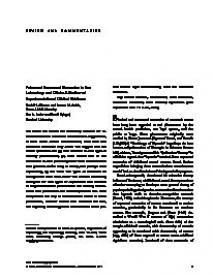False and Recovered Memories in the Laboratory and Clinic: A Review of Experimental and Clinical Evidence
We review the clinical and laboratory evidence for recovered and false memories. Available data suggest that, at least under certain circumstances, both false and recovered memories may occur. We suggest that the critical questions are: (a) how common is each type of memory phenomenon, (b) what factors lead to the occurrence of each (including under what conditions are each possible and/or likely to occur), and perhaps most importantly, (c) can these two types of memories be distinguished from each other?
We describe laboratory analogues for both types of experiences and describe an empirical research protocol that can not only demonstrate both phenomena but also compare the two. Such comparisons can help to determine the causes of these phenomena, discover factors that influence the two, and hopefully reveal signature variables that could provide telltale signs differentiating false and recovered memories.
Geachte bezoeker,
De informatie die u nu opvraagt, kan door psychotraumanet niet aan u worden getoond. Dit kan verschillende redenen hebben,
waarvan (bescherming van het) auteursrecht de meeste voorkomende is. Wanneer het mogelijk is om u door te verwijzen naar de bron
van deze informatie, dan ziet u hier onder een link naar die plek.
Als er geen link staat, kunt u contact opnemen met de bibliotheek,
die u verder op weg kan helpen.
Met vriendelijke groet,
Het psychotraumanet-team.
In: Clinical Psychology : Science and Practice ISSN : 1468-2850 | 11 | 1 | 2-28
https://doi.org/10.1093/clipsy.bph055


